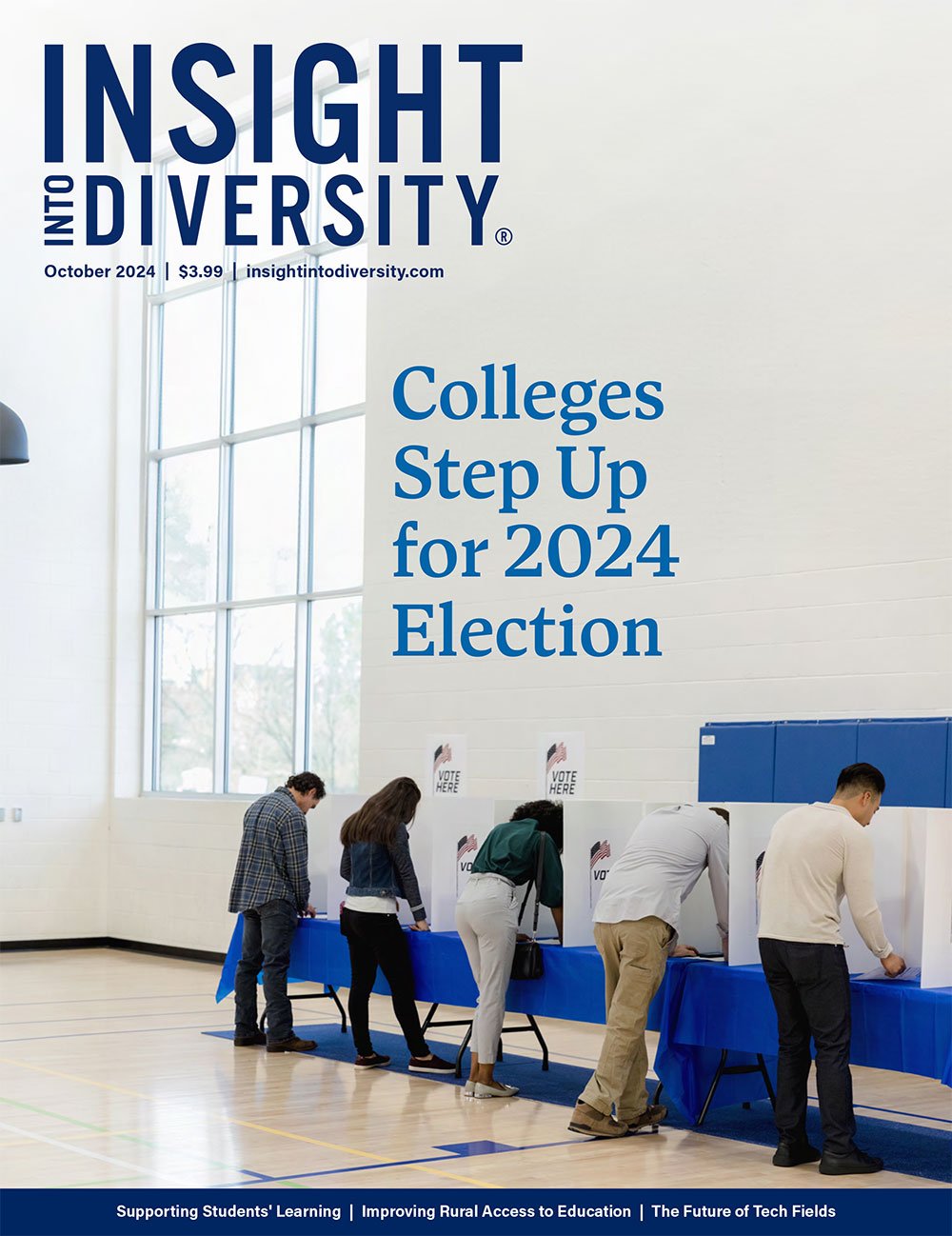In the fall of 2014, Saint Louis University (SLU) became a focal point of the national conversation on racial injustice and police violence. The catalyst was the deaths of two young Black men, Michael Brown and VonDerrit Myers Jr., who were both shot by police in the suburbs of St. Louis. These events sparked a wave of protests that swept across the region, leading to more than 400 days of civil unrest. On October 12, 2014, demonstrators marched onto SLU’s campus and established a six-day encampment at the university’s iconic clock tower.
What began as a demonstration turned into a historic dialogue between the students, faculty, administration, and community leaders. The result was the creation of the Clock Tower Accords — a 13-point agreement aimed at addressing issues of racial inequality and promoting DEI (diversity, equity, and inclusion) at the university. Nearly a decade later, the accords and the process by which they were collectively created remain models for peaceful resolution and institutional change, offering a road map for other universities facing similar challenges.
The encampment at SLU was not just another protest in a year marked by widespread demonstrations; it was a moment of reflection and reckoning for the university. The occupation took place at a time when cities across the country were grappling with systemic racism and police violence. SLU, located in the heart of St. Louis, could not remain isolated from the tensions that existed right outside its gates.
The late Jonathan Smith, PhD, an Ivy League-educated professor of African literature and a resident of the surrounding neighborhood, immediately recognized the significance of the moment. “One of my colleagues sent me a text that campus was being occupied,” he recalled in an interview with Universitas, SLU’s alumni magazine. “I thought, I’m going to be in this because … this is my neighborhood. This is where I live. SLU is where I work. I can’t not be involved.”
Jonathan Smith, who would later become SLU’s inaugural chief diversity officer, took his class to the clock tower and invited protesters to join his class and engage in discussions with the students. These conversations were critical in transforming the occupation from a protest into a constructive dialogue.
University leadership — led by SLU President Fred Pestello, PhD.— along with community leaders, student activists, and faculty members, including Jonathan Smith, entered into talks with the protestors, culminating in the creation of the Clock Tower Accords.
It is important to note that the accords were not the result of a formal negotiation, but rather a collective agreement born out of days of open discussion. Rochelle D. Smith, chief diversity officer and vice president of the Division of Diversity and Innovative Community Engagement, says, “The accords reflected a moment in time when the university and the community were willing to engage in meaningful dialogue. It wasn’t easy, but the conversations that took place were necessary for the university to move forward.”
The 13 Points of the Clock Tower Accords
The Clock Tower Accords consisted of 13 commitments that the university agreed to prioritize in the aftermath of the occupation. These included increasing financial aid for African American students, expanding the African American Studies Program, creating a diversity speaker series, and developing college preparation workshops for students from disadvantaged neighborhoods, among other efforts.
One of the most significant outcomes of the accords included establishing SLU’s chief diversity officer and vice president of the Division for Diversity and Innovative Community Engagement (DICE) positions to serve as part of the President’s Cabinet and the Provost’s Leadership Council, and to administratively support the DEI Committee for the Board of Trustees. These positions were key in overseeing the implementation of the agreements and ensuring that DEI initiatives were integrated into all aspects of university life. Jonathan Smith played a pivotal role in shaping this office during his tenure as its first leader.
“We lost [Jonathan] Smith suddenly in the summer of 2021, but his legacy lives on,” says Allison Brewer, assistant vice president of strategic initiatives for DICE. “Many of the initiatives he helped start, like the Diversity Speaker Series and the increased financial aid for underrepresented students, continue to resonate today.”
While the Clock Tower Accords marked a turning point for SLU, the path to implementing the agreements was not without challenges. The region was still in the midst of prolonged protests, and the broader national conversation around racial justice was highly charged. Some critics argued that the university was acting too quickly in response to student demands, while others believed that the accords did not go far enough in addressing systemic racism.
“It might be prudent to identify that the path we took was not necessarily a popular one,” says Rochelle D. Smith. “We reflect on the six-day peaceful encampment as a historical and atypical moment of protest on college campuses. The Clock Tower Accords reflected the moment, and challenges arose where we had to continue our commitment under the spirit — rather than the letter.— of the accords.”
The university also learned that creating institutional change is an ongoing process that requires sustained commitment. While some of the goals were quickly accomplished, others, like improving the retention rates for African American students, are long term and require continuous effort and attention.
“Some of the things at the heart of the accords are ongoing and, frankly, multigenerational projects. Also, some of that work is so mundane. People don’t want to check retention rates and financial aid data on a daily basis. And that’s where the rubber meets the road,” Smith remarked in an interview before his passing.
Impact and Progress
Nearly ten years after the creation of the Clock Tower Accords, SLU has made significant strides in achieving many of its original goals. The African American Studies Program has been expanded into a standalone department, and financial aid for underrepresented students has increased significantly. In 2022, SLU awarded $270 million in institutional aid, with 99% of first-time freshmen receiving financial assistance. The university has also launched initiatives like the THRIVE Learning Community, which helps Black students deepen their cultural understanding and develop the skills to address institutional and societal challenges.
SLU’s Board of Trustees now includes a representative from the Student Government Association, and students have been given a greater role in decision-making processes across the university. Brewer says, “We now engage student voices at the highest levels of decision-making. This has only enhanced how we serve our community.”
Despite these successes, challenges remain. Some of the more ambitious objectives of the accords, like the creation of a community center and the establishment of a Race, Poverty, and Inequality Steering Committee, are still in progress. However, SLU remains committed to fulfilling both the spirit and the letter of the agreements.
“As we approach the ten-year commemoration of the accords, we are reflecting on what has been accomplished and what still needs to be done,” says Brewer. “This anniversary is not just a moment to look back but also to look forward and recommit ourselves to the work ahead.”
SLU believes the Clock Tower Accords process provides a blueprint for other universities seeking peaceful conflict resolution and DEI enactment on their campuses. While the specifics of the accords agreements are unique to SLU, the process by which they were created and implemented offers valuable lessons for other institutions facing similar challenges.
“Our growth and progress towards many of the Clock Tower Accords centers around critical components central to diversity, equity, inclusion, and belonging initiatives, which are experiencing a shifting landscape across the nation and, more specifically, here in Missouri. When we face challenges, we look to engage our communities as participants in decision-making processes.— one of the many lessons learned from the increasingly expansive impact of the Clock Tower Accords one decade after they came to fruition,” says Brewer.
Rochelle D. Smith emphasizes, “We recognize that we should not be making decisions in isolation from the communities we serve. Through equitable community engagement, we center those who are most impacted.”
Another lesson is the need for sustained commitment, especially from leadership. Institutional change does not happen overnight, and universities must be willing to invest in long-term solutions. “The work happens in small spaces, but it happens continuously,” Smith said in an interview before his passing. “Young people need to have the fierce urgency of now, while those in leadership positions need to commit to the long haul.”
Finally, SLU underscores the importance of aligning institutional actions with the university’s core mission and values. As a Jesuit institution, SLU is guided by the principle of “cura personalis,” or care for the whole person. This philosophy has informed the university’s approach to diversity and inclusion, ensuring that its efforts are not just about meeting benchmarks, but about fostering a more just and equitable community.
“The Clock Tower Accords were a turning point for SLU, but the work is far from over,” says Brewer. “This anniversary is a chance to renew our collective dedication to building a more inclusive and equitable university. We look forward to engaging our students, faculty, staff, and community members in this ongoing journey.”




















